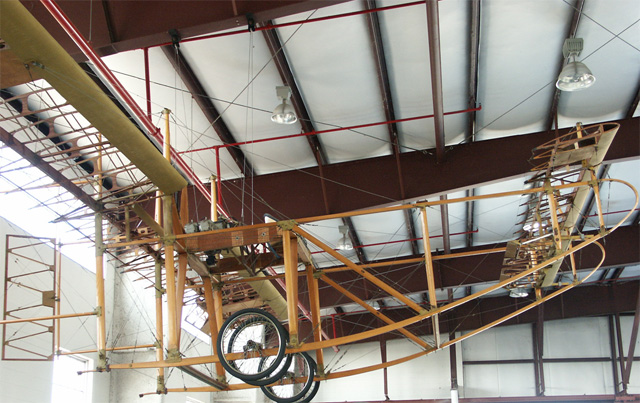
1911 Valkyrie
When Louis Blériot crossed the English Channel in 1909, the flight shocked the British public into realizing their island nation was now vulnerable, even under the watchful eye of the British Navy.
At a time when the only British aircraft flying was the Avro Triplane, little-known pioneer Horatio Barber began the development of another aircraft of his own design, the Valkyrie—initiating a pioneering effort for Great Britain to “get in the aviation race” and catch up!
The Valkyrie features a “canard configuration,” which places the tail in the front! Despite its awkward appearance, it was a marked improvement over the Avro Triplane. The original Valkyrie Model A was powered by a 35 hp inline Green engine. The next model, the Model B, used a 50 hp Gnome rotary, and the Model C used a larger 65 hp Green inline engine.
Approximately 11 aircraft were built between March 1910 and May 1911. In 1912, the Valkyrie was used in training pilots for the fledgling Royal Flying Corps.
Specifications
- Year Built — 1911
- Wingspan — 31′
- Cruise Speed — 40 mph
- Gross Weight — 675 lbs
- Original Engine — Green (35 hp)
- Current Engine — Continental (65 hp)
Kermit’s Comments
This aircraft was purchased from the Cradle of Aviation Museum on Long Island, New York, in 1987. It is a replica, which is similar in appearance to the original but using more modern materials and is not very exact in detail. It has a modern engine and airfoil and was built slightly scaled down to be able to transport it by road without a special permit, as the original aircraft was 10 feet wide.
I have always been fascinated by this configuration and would one day like to build a more original version to fly. The Valkyrie was the first documented use of a heavier-than-air craft to be contracted for freight service! It carried a box of Osram lamps between two towns for 100 pounds Sterling.